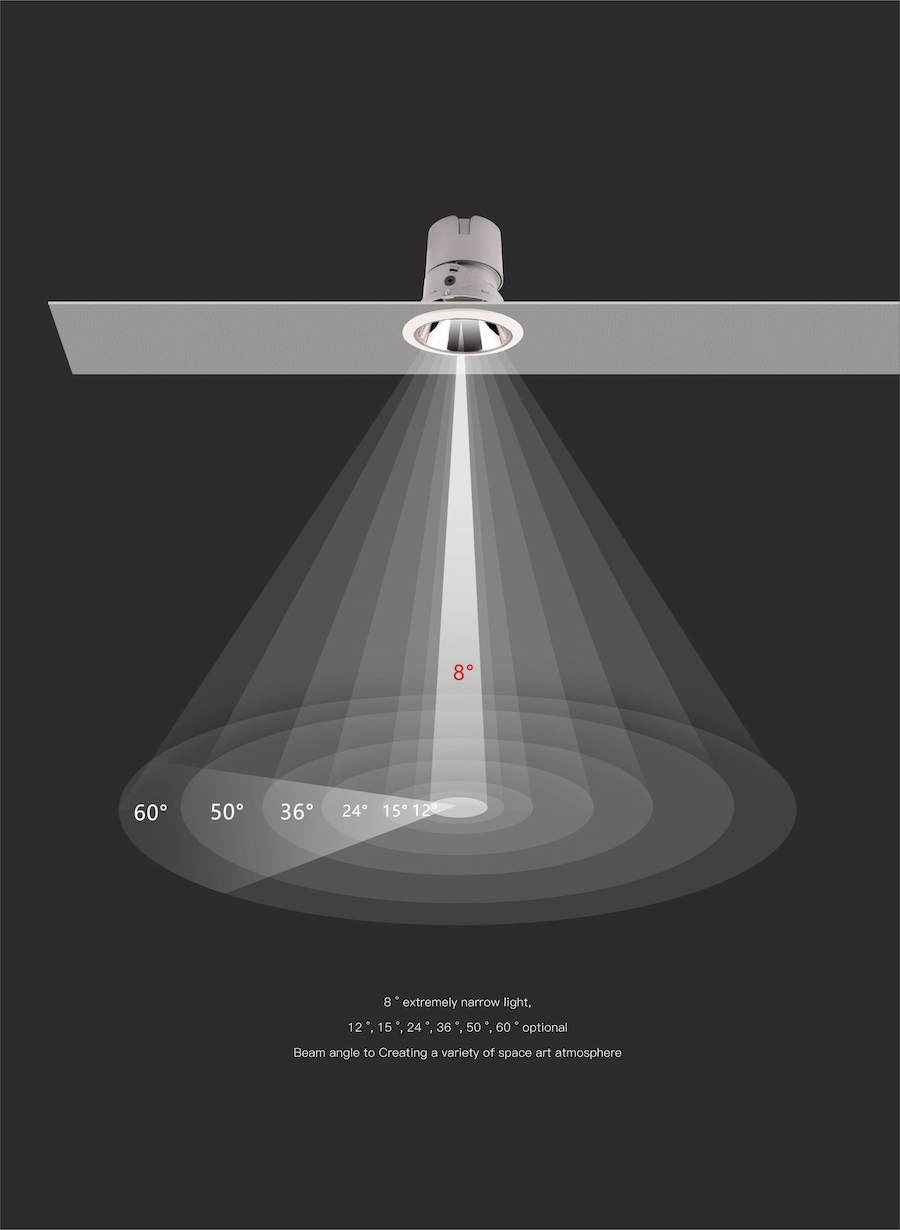Understanding Beam Angle Of Led Downlights: Choosing The Perfect Illumination For Every Application
Nov 07, 2023In The World Of Led Lighting, Understanding Beam Angles Is Crucial For Achieving Optimum Lighting Effects. Led Downlights, Spotlights, And Track Lights Have Different Beam Angles, Which Significantly Impact The Dispersion And Coverage Of Light. In This Article, We Will Delve Into The Concept Of Beam Angles, Explore Their Importance, And Guide You On Selecting The Suitable Beam Angle For Various Applications. As a Leading Led Lights Manufacturer And Supplier, We Aim To Empower You With The Knowledge To Make Informed Lighting Decisions.
1. What Is Beam Angle?
Beam Angle Refers To The Spread Of Light Emitted From An Led Light Source. It Is Measured In Degrees And Determines The Width Of The Light Beam. A Narrower Beam Angle Produces a Focused, Intense Light, While a Wider Beam Angle Provides a Broader, More Dispersed Illumination.
2. Understanding Beam Angle:
Let's Illustrate The Concept Using Examples Of Led Downlights, Spotlights, And Track Lights:
- Led Downlights: Typically Used For General Lighting Purposes, Led Downlights Have Beam Angles Ranging From 30 To 120 Degrees. A Wider Beam Angle, Such As 120 Degrees, Is Ideal For Illuminating Larger Spaces Like Living Rooms Or Offices, Providing Uniform And Ambient Lighting. On The Other Hand, a Narrower Beam Angle Of Around 30 Degrees Is Suitable For Accent Lighting, Highlighting Specific Areas Or Objects, Such As Artwork Or Architectural Features.
- Led Spotlights: Led Spotlights Are Used To Create Focused, Directional Lighting. They Generally Have Beam Angles Ranging From 15 To 60 Degrees. A Narrow Beam Angle, Such As 15 Degrees, Is Great For Emphasizing Objects Or Creating Dramatic Lighting Effects. Meanwhile, Wider Beam Angles, Like 60 Degrees, Are Suitable For Broader Coverage In Spaces That Require More Ambient Lighting.
- Led Track Lights: Used For Accent Lighting And Highlighting Specific Areas, Led Track Lights Offer Versatility. They Typically Have Beam Angles Ranging From 15 To 60 Degrees, Allowing Precise Illumination Control Along The Track. Narrow Beam Angles Are Suitable For Highlighting Individual Objects Or Architectural Details, While Wider Beam Angles Are Preferable For General Lighting Or Larger Areas.
3. Selecting The Suitable Beam Angle:
When Selecting The Suitable Beam Angle For Your Led Downlights, Consider The Following Factors:
- Purpose: Determine The Primary Purpose Of The Lighting. Is It For General Lighting, Accent Lighting, Or Task Lighting? This Will Help You Choose The Appropriate Beam Angle That Best Fulfills Your Lighting Requirements.
- Room Size: Consider The Size Of The Room Or Space You Are Lighting. Larger Spaces Generally Benefit From Wider Beam Angles To Achieve More Uniform Illumination, Whereas Smaller Spaces May Require Narrower Beam Angles For Targeted Lighting.
- Desired Effect: Determine The Desired Lighting Effect You Want To Achieve. Do You Aim To Highlight Specific Objects Or Create a Cozy Atmosphere? Narrow Beam Angles Are Effective For Focused Lighting, Whereas Wider Angles Provide a Softer, More Diffuse Illumination.
- Lighting Design: Consider The Overall Lighting Design And Layout. Combine Different Beam Angles Strategically To Create a Visually Appealing And Functional Lighting Scheme.
Conclusion:
In The Realm Of Led Lighting, Understanding Beam Angles Is Essential For Creating The Desired Lighting
